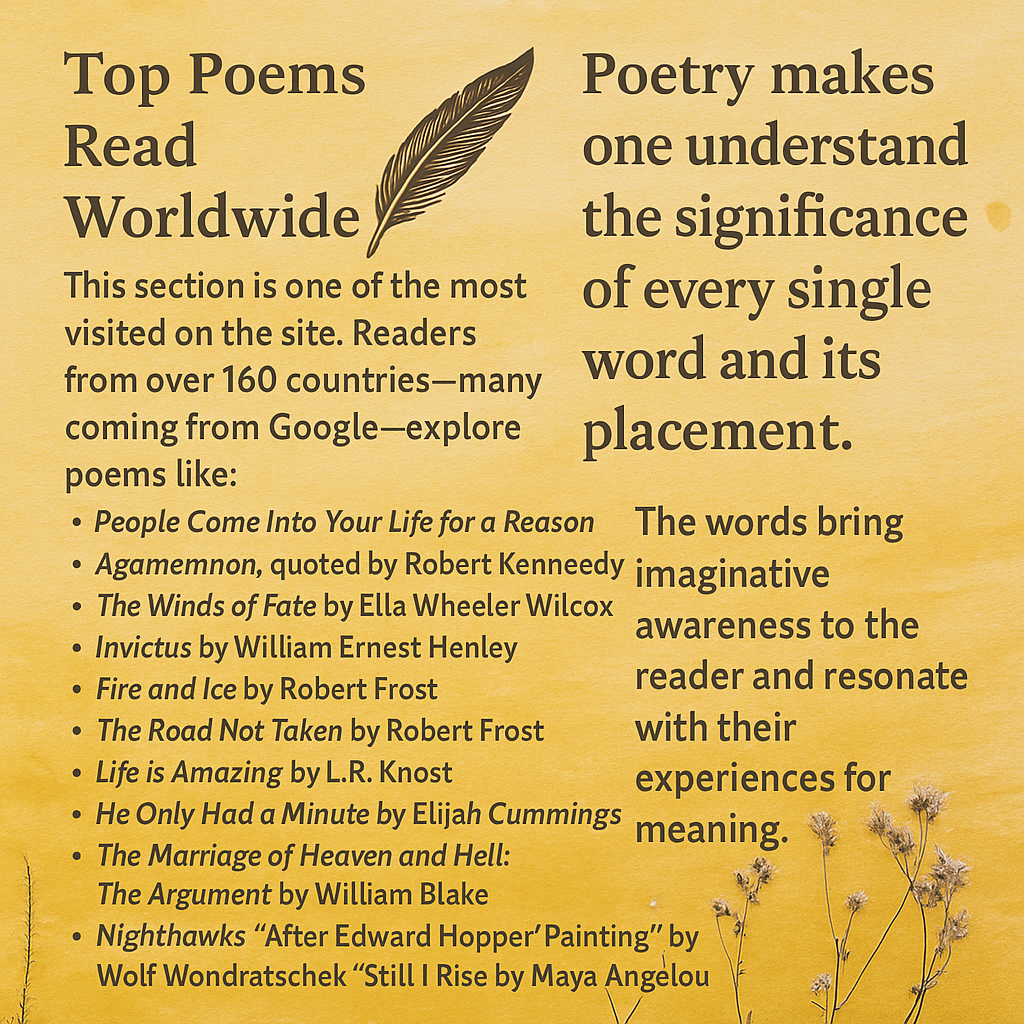This poem describes the purpose of life, and how one should handle the sorrow and struggles along the way. The phrase “Life is real! Life is earnest” suggests that the intent is to look ahead an offer help rather than back in remorse. I wrote about how this poem and Ella Wheeler Wilcox’s poem, “The Winds of Fate”, both influences me in an unexpected way. As I worked with so many job seekers helping them to find jobs I felt as the poem mentions, “ things are not what they seem” and the power of this final stanza:
Let us, then, be up and doing,
With a heart for any fate;
Still achieving, still pursuing
Learn to labor and to wait.Both of the poems influenced me to write a non fiction book: Work Matters: Insights and Strategies for Job Seekers in this Rapidly Changing Economy
A Psalm of Life
Henry Wadsworth Longfellow - 1807-1882




